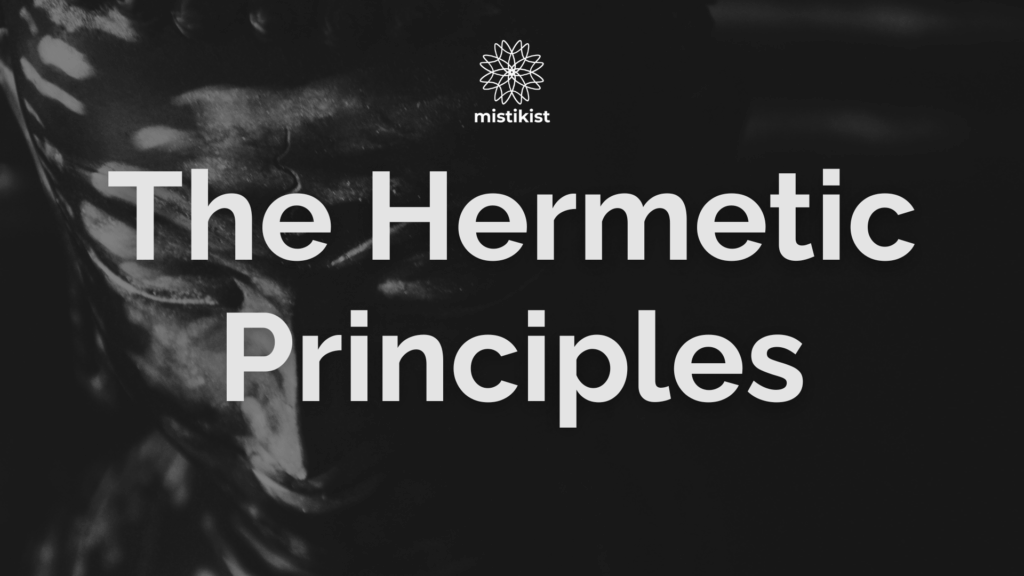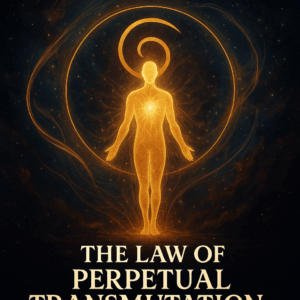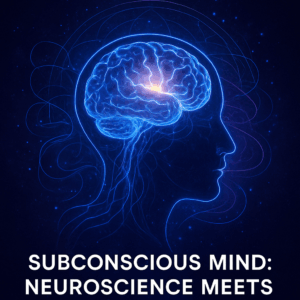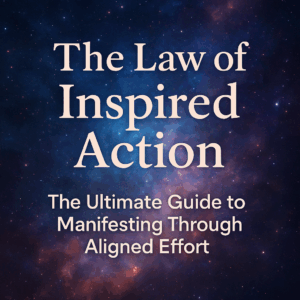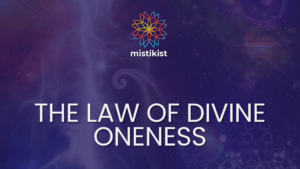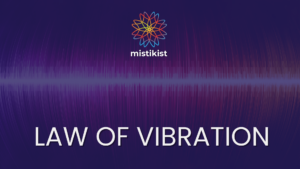What Is Hermetic Philosophy?
Hermetic philosophy (Hermetism) is an ancient spiritual and philosophical tradition rooted in the teachings attributed to Hermes Trismegistus, a mythical figure considered to be the “thrice‑great Hermes.” This esoteric system synthesizes elements of Egypt, Greek philosophy, alchemy, astrology, and mystical wisdom. At its core lie the Seven Hermetic Principles, described in modern times in texts like The Kybalion. These principles are universal laws meant to explain how the universe works, how consciousness interacts with reality, and how individuals can align themselves with these cosmic truths to achieve spiritual growth, clarity, and mastery.
The 7 Hermetic Principles
1) The Principle of Mentalism: This principle posits that “The All is Mind.” According to Hermetic thought, the foundational reality of the universe is mental — everything originates from consciousness or a universal mind. Since reality itself is mental, our thoughts, beliefs, and mental patterns have a creative power. What we focus on, we bring into being. By mastering your mental world — through meditation, visualization, affirmations, or mindfulness — you can influence your external reality. For instance, you can reframe negative thought patterns into positive ones, thereby shifting your experience of life.
2) The Principle of Correspondence: Often summarized as “As above, so below; as below, so above.” This means that there is a correspondence or harmony between different levels of existence — the macrocosm (the universe) and the microcosm (the individual). Patterns in the cosmos (stars, planets) reflect patterns in human life; similarly, inner psychological states mirror external reality. Studying nature, astronomy, or even your own inner psyche can help you understand universal dynamics. For example, noticing how cycles in your emotional life mirror cycles in nature can provide insight into when to act, rest, or reflect.
3) The Principle of Vibration: Everything is in motion, everything vibrates. Nothing rests; all matter, energy, mind, and even spirit vibrate at particular frequencies. Difference in matter, energy, or consciousness is due to varying rates of vibration. Lower vibrations reflect denser, more physical states; higher vibrations correspond to subtler, more refined states. You can raise your vibrational frequency through practices such as meditation, sound healing, music, positive thinking, and healthy living. By aligning your vibration with higher frequencies, you attract more harmonious experiences and insights.
4) The Principle of Polarity: Everything is dual; everything has two poles; everything has its pair of opposites (e.g., hot/cold, light/dark, love/fear). But these opposites are really only different degrees of the same thing. Understanding polarity helps us recognize that extremes are connected. What we perceive as negative may be just the opposite end of the same spectrum as what we perceive as positive. By consciously polarizing yourself (choosing which “pole” to identify with), you can transform negative states into positive ones. For example, you can transmute fear into courage by acknowledging both sides and choosing to anchor in the more empowering pole.
5) The Principle of Rhythm: Everything flows in and out; everything has its tides; all things rise and fall; the measure of the swing to the right is the measure of the swing to the left. Rhythm compensates. Life is cyclical. There are natural cycles in everything — seasons, emotions, success, failure, birth, death. These rhythms can neither be denied nor avoided, but understood and navigated. By recognizing and aligning with natural rhythms, you can anticipate periods of growth and rest, productivity and recovery. For example, if you notice a creative or energetic high, you can harness it to produce, and during a low, you can rest and reflect rather than force productivity.
6) The Principle of Cause and Effect: Every cause has its effect; every effect has its cause; everything happens according to law; chance is but a name for law not recognized. Nothing truly “just happens” randomly. There is a chain of causation: events, thoughts, and actions are interconnected. By taking responsibility for your actions, thoughts, and decisions, you become a co-creator of your life. Choose causes consciously — set clear intentions, make deliberate choices, and understand that your actions reverberate in your reality. Also, study the effects in your life to learn how your internal state leads to external outcomes.
7) The Principle of Gender: Gender is in everything; everything has its masculine and feminine principles (not just in biological terms but in metaphysical terms). These masculine and feminine energies are universal creative forces. They operate at all levels: physical, mental, and spiritual. Balance the masculine (action, structure, logic) and feminine (intuition, creativity, receptivity) within yourself. In spiritual practice or creative endeavors, integrating both energies can lead to more harmonious outcomes, more innovation, and deeper insight.
Why the 7 Hermetic Principles Matter Today
-Spiritual Development: These principles provide a framework for inner alchemy. By understanding how your mind shapes reality (Mentalism), or how energy flows (Vibration), you can accelerate personal growth.
-Self-Mastery: The laws of Cause & Effect and Polarity teach you responsibility and transformation. You learn that you are not a passive victim of fate but an active co-creator.
-Manifestation and Creativity: Understanding these hermetic laws helps you manifest more intentionally. Whether in business, art, or relationships, you can work with universal rhythms and creative energies more effectively.
-Universal Wisdom: Hermetism draws from various traditions — alchemy, astrology, Greek philosophy — making it a rich, integrative path of wisdom. By studying hermetic philosophy, you tap into an ancient but timeless source of esoteric knowledge.
Criticisms and Misunderstandings
1) Esoteric vs. Exoteric: Hermetic philosophy is esoteric, meaning it’s intended for those who are willing to go deeper than surface-level spirituality. People expecting quick fixes may misinterpret its depth.
2) Not a Religion: Hermetism is more of a philosophy or a spiritual science than a religion. There is no dogma, no prescribed deity in the sense of organized religion; rather, there is an investigation of universal laws.
3) Misuse of Concepts: Sometimes “law of attraction” teachings misuse or oversimplify Hermetic ideas. While Hermeticism does affirm mental causation, it also emphasizes responsibility, balance, and the subtlety of universal laws — not just “wish for something and it will happen.”
Tips on How to Practice Hermetic Philosophy in Daily Life
-Study and Contemplate: Read classical Hermetic texts (or reliable Modern Hermetic works like The Kybalion). Reflect on each principle, journal your insights.
-Meditation & Visualization: Use daily practices to harness the Principle of Mentalism and Vibration. Visualize your goals, meditate on your inner mind, work on raising your energy.
-Mindful Awareness: Pay attention to cause-and-effect in your life. Notice patterns, habitual thoughts, and how internal states reflect in external events (Correspondence, Rhythm).
-Polarity Work: When you feel stuck in a negative emotion, identify its opposite pole. Practice mental or emotional transmutation: shift from sadness to gratitude, fear to courage, etc.
-Balance Masculine and Feminine Energies: Engage in activities that cultivate both. For example, logical planning (masculine) and creative play (feminine) in your work or relationships.
-Align with Cycles: Recognize your own natural rhythms. Incorporate periods of rest, reflection, and action in sync with your energy cycles.
-Intention Setting: Use the Principle of Cause & Effect actively. Set clear, conscious intentions, take aligned actions, and observe the results. Learn and adjust.
Summary
Hermetic philosophy, built on the foundation of the Seven Hermetic Principles, offers a profound, timeless map for understanding the universe and our place within it. Whether you are drawn to spirituality, personal development, or esoteric wisdom, these principles can guide you to deeper self-awareness, greater personal power, and alignment with the universal flow.
By applying Mentalism, Correspondence, Vibration, Polarity, Rhythm, Cause & Effect, and Gender in your daily life, you become not just an observer but an active participant in the creation of your reality.
Follow Mistikist on Instagram

